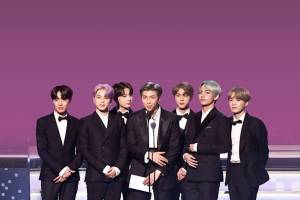In the early days of action cinema, heroes didn't say much—they didn't have to. Think of silent film stars like Buster Keaton or early Western figures.
These characters relied on physical prowess, calm under pressure, and a no-nonsense attitude. Their strength came from stoicism and control, not flashy dialogue or emotional depth.
As action movies evolved into the 1960s and 1970s, icons like Clint Eastwood defined the genre. They brought intensity, economy of words, and raw skill. The action hero was someone who could stand alone against overwhelming odds, without needing help—or feelings.
Muscles and Mayhem: The 1980s Icon
The 1980s were the golden age of the hyper-masculine action hero. Characters were larger than life, built like machines, and capable of surviving anything. Stars like Sylvester Stallone and Arnold Schwarzenegger became household names. They didn't just play characters—they were the action genre.
These heroes operated on physical dominance and simple motivation: rescue someone, destroy the threat, and survive. Their emotional range was limited, but their presence was huge. Explosions, one-liners, and physical strength defined this era. The message was clear: the hero wins through power and endurance.
The 1990s Shift: Brains Join Brawn
In the 1990s, the genre began to shift. Audiences wanted more depth and intelligence. Enter action heroes like Keanu Reeves in Speed, Will Smith in Bad Boys, and Bruce Willis in Die Hard (which started in 1988 but hit its stride into the '90s). These characters were still tough—but more vulnerable, more human.
They got hurt. They doubted themselves. They cracked jokes under pressure, showing fear as well as courage. The modern action hero wasn't invincible—they were relatable. This change made characters more accessible and believable, even when the stunts were still over-the-top.
21st Century: Complexity, Morality, and Flaws
The early 2000s brought a new kind of action star: complex, conflicted, and often haunted by past mistakes. Films like The Bourne Identity, Gladiator, and The Dark Knight featured protagonists who were emotionally layered. Strength wasn't just physical—it was mental and moral.
Jason Bourne didn't know who he was. Maximus fought for glory and memory. Batman was torn between justice and vengeance. The action genre began asking deeper questions: What makes a hero? Can someone be both broken and brave?
This era leaned heavily on realism. Choreography became more grounded. Heroes made real sacrifices. Flaws were not just shown—they were central to the story.
Diversity and Redefinition: New Voices in Action
In the past decade, the image of the action hero has grown more inclusive. We've seen female-led action films like Mad Max: Fury Road (with Furiosa), Wonder Woman, and The Hunger Games, where strength and emotion exist side by side. These characters aren't just strong "for a woman"—they're strong, period.
We've also seen more global influence. Action heroes from across the world—such as Donnie Yen, Iko Uwais, and more—have reshaped action choreography and redefined what physical excellence looks like. The genre has also expanded to include more diverse identities, cultures, and experiences, giving audiences a wider range of heroes to connect with.
Technology and Superhuman Standards
With the rise of superhero films and CGI, today's action heroes often exist in enhanced worlds. Marvel and DC characters have brought in supernatural elements, futuristic tools, and epic-scale fights. But even within these spectacles, emotional depth is still expected.
Take Iron Man. He's brilliant, wealthy, and tech-equipped—but he's also deeply flawed, struggling with guilt and purpose. This balance of spectacle and humanity is key to modern action storytelling.
What's Next for the Action Hero?
Looking ahead, the action hero will likely keep evolving to reflect the times. We may see more grounded stories, psychological depth, and unconventional protagonists. There's growing interest in action narratives that focus on justice, redemption, and resilience—without relying solely on violence or dominance.
Final Thoughts: Who's Your Hero?
Action movies are more than explosions and chases—they're mirrors of who we admire, who we aspire to be, and what we believe courage looks like. From the silent stoic to the emotionally complex underdog, the action hero has never stopped growing.
So, who's your favorite action hero—and why do they stand out to you? Let's talk about the legends, the misfits, and the game-changers that have shaped the genre.

